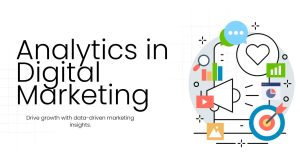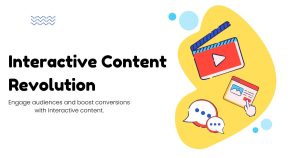Why Emotional Marketing creates loyal customers

Most marketers focus on features, benefits, and logical selling points. They craft messages highlighting product specifications, competitive advantages, and rational reasons to buy. But the most successful brands know something different: people make purchasing decisions with their hearts, then justify those choices with their heads.
Emotional marketing taps into fundamental human feelings like joy, fear, nostalgia, and belonging to create powerful connections between brands and consumers. When done authentically, this approach transforms casual buyers into passionate advocates who choose your brand repeatedly and recommend it to others.
This comprehensive guide explores how emotional marketing works, why it’s so effective, and provides actionable strategies you can implement to build deeper relationships with your audience.
What is emotional marketing?
Emotional marketing is a strategy that deliberately targets consumers’ feelings to influence purchasing decisions and brand loyalty. Rather than focusing solely on product features or logical arguments, this approach creates campaigns that evoke specific emotional responses.
The strategy recognizes that humans are inherently emotional beings. Our feelings significantly influence our decision-making process, often more than rational considerations. When brands successfully trigger positive emotions, they create memorable experiences that consumers associate with their products or services.
Emotional marketing manifests in various forms, from heartwarming storytelling in commercials to fear-based messaging in insurance ads. The key is identifying which emotions resonate most strongly with your target audience and crafting authentic messages that speak to those feelings.
The psychology behind emotional marketing
Understanding why emotional marketing works requires examining how the human brain processes information and makes decisions. Neuroscientist Antonio Damasio’s research revealed that people with damage to the brain’s emotional center struggle to make even simple decisions, despite having intact logical reasoning abilities.
This discovery highlights the critical role emotions play in decision-making. When we encounter marketing messages, our emotional brain responds first, creating an immediate reaction before our logical mind begins analyzing details like price, features, or benefits.
Emotions also serve as mental shortcuts, helping us process information quickly in our fast-paced world. A brand that makes us feel safe, excited, or understood can bypass lengthy comparison shopping because the emotional connection provides confidence in the choice.
Memory formation relies heavily on emotional context. We’re more likely to remember experiences that triggered strong feelings, which explains why emotional advertisements often have better recall than purely informational ones. This enhanced memory creates top-of-mind awareness when consumers are ready to make purchasing decisions.

Core emotions that drive purchasing decisions
Different emotions motivate various types of consumer behavior. Understanding these emotional drivers helps marketers choose the most effective approach for their specific goals and audience.
Fear and urgency
Fear-based marketing creates a sense of urgency or highlights potential negative consequences of inaction. Insurance companies frequently use this approach, showing scenarios where accidents or disasters impact unprepared families. Limited-time offers also leverage fear of missing out (FOMO) to accelerate purchase decisions.
While effective, fear-based marketing requires careful execution to avoid appearing manipulative or causing anxiety. The most successful fear-based campaigns provide clear solutions and reassurance alongside the initial emotional trigger.
Joy and happiness
Positive emotions like joy create pleasant brand associations that consumers want to experience repeatedly. Coca-Cola’s “Share a Coke” campaign exemplified this approach by personalizing bottles with names and encouraging people to share happy moments with friends and family.
Happiness-focused marketing works particularly well for lifestyle brands, entertainment companies, and products associated with celebrations or social experiences. These campaigns often feature vibrant visuals, upbeat music, and scenarios depicting people enjoying life.
Trust and security
Trust-based marketing emphasizes reliability, stability, and safety. Banks, technology companies, and healthcare providers frequently use this approach to address consumers’ concerns about security and dependability.
Building trust requires consistent messaging, transparent communication, and social proof like testimonials or certifications. Trust-based campaigns often feature authoritative figures, detailed explanations of safety measures, or long-term guarantees.
Belonging and community
Humans have a fundamental need to belong and connect with others who share similar values or interests. Brands that create a sense of community around their products often develop intensely loyal customer bases.
Apple masterfully employs this strategy by positioning their customers as creative, innovative individuals who think differently. Nike’s campaigns celebrate athletes and active lifestyles, making customers feel part of an empowering community focused on achievement and personal growth.
Successful emotional marketing examples
Examining real-world examples helps illustrate how different brands effectively implement emotional marketing strategies across various industries and emotional triggers.
Nike’s “Just Do It” campaigns consistently tap into emotions around personal achievement, overcoming obstacles, and pushing beyond limitations. Their advertisements feature both professional athletes and everyday people conquering challenges, creating an aspirational emotional connection that motivates consumers to associate Nike with their own goals and ambitions.
Dove’s “Real Beauty” campaign challenged traditional beauty standards by featuring women of diverse ages, sizes, and backgrounds. This approach triggered emotions around self-acceptance, authenticity, and empowerment while positioning Dove as a brand that truly understands and supports women’s experiences.
Always’ “Like a Girl” campaign transformed a phrase traditionally used as an insult into an empowering statement about female strength and capability. The emotional impact came from highlighting societal prejudices while inspiring viewers to reconsider their assumptions and support young women’s confidence.
These examples demonstrate how emotional marketing can address larger social issues while building brand affinity. Each campaign created genuine emotional responses that extended far beyond the products themselves.

Building your emotional marketing strategy
Creating an effective emotional marketing strategy requires careful planning, deep audience understanding, and authentic execution. Follow these steps to develop campaigns that genuinely resonate with your target customers.
Research your audience deeply
Successful emotional marketing begins with understanding your audience’s hopes, fears, challenges, and aspirations. Go beyond basic demographics to explore the emotional landscape of your customers’ lives.
Conduct surveys, interviews, and focus groups to uncover emotional triggers. Ask questions about their biggest concerns, proudest moments, and what motivates them to take action. Social media listening tools can reveal how customers express emotions when discussing your industry or competitors.
Create detailed customer personas that include emotional characteristics alongside traditional demographic information. Understanding whether your audience values security over adventure, or community over independence, helps guide creative decisions.
Choose authentic emotional connections
The emotions you target should align naturally with your brand values, product benefits, and customer needs. Forcing artificial emotional connections often backfires because audiences can detect inauthentic messaging.
Consider your product’s role in customers’ lives and the emotions that naturally arise from that relationship. A retirement planning service might focus on security and peace of mind, while a fitness brand could emphasize empowerment and achievement.
Avoid emotional triggers that contradict your brand’s personality or values. A luxury brand using fear-based scarcity tactics might damage its prestigious image, while a budget-friendly brand emphasizing exclusivity could confuse customers about its market position.
Craft compelling stories
Storytelling transforms abstract emotions into concrete, relatable experiences. Effective emotional marketing tells stories that customers can see themselves within, creating personal connections to your brand.
Structure your stories with clear emotional arcs that mirror your customers’ journeys. Begin with a relatable challenge or desire, show the transformation process, and conclude with the positive outcome your product enables.
Use specific details and sensory language to make stories more vivid and memorable. Rather than saying “our product makes life easier,” describe the relief a busy parent feels when discovering a solution that gives them more time with their children.
Select appropriate channels and formats
Different marketing channels and content formats excel at conveying different types of emotional messages. Video content allows for complex storytelling with visual and auditory elements, while social media posts can capture spontaneous moments of joy or community.
Consider where your audience consumes content when experiencing the emotions you want to target. Inspirational fitness content might perform well on Instagram, while security-focused financial services messaging could work better in more serious contexts like LinkedIn or email newsletters.
Test various formats to determine what resonates most strongly with your specific audience. Some brands find success with long-form video content, while others achieve better results with concise, impactful images and captions.
Measuring emotional marketing effectiveness
Tracking the success of emotional marketing requires metrics that go beyond traditional conversion rates and click-through statistics. While these quantitative measures remain important, emotional campaigns often create value through brand affinity, word-of-mouth marketing, and long-term customer loyalty.
Monitor sentiment analysis across social media platforms and review sites to gauge how your campaigns affect audience perception. Look for increases in positive mentions, engagement rates, and brand-related conversations that indicate emotional resonance.
Survey customers about their emotional connections to your brand before and after campaigns launch. Questions about trust levels, brand personality perception, and likelihood to recommend can reveal shifts in emotional relationships.
Track long-term metrics like customer lifetime value, repeat purchase rates, and referral generation. Emotional marketing often shows its greatest impact over extended periods as customers develop stronger relationships with brands they feel connected to.
Pay attention to qualitative feedback in comments, reviews, and customer service interactions. Customers who feel emotionally connected often provide more detailed, passionate feedback that reveals the depth of their relationship with your brand.

Start building emotional connections today
Emotional marketing isn’t about manipulation or creating artificial feelings. The most successful emotional campaigns tap into genuine human experiences and provide authentic value to customers’ lives. When brands understand their audience’s emotional landscape and respond with empathy and authenticity, they create relationships that transcend traditional buyer-seller dynamics.
Begin by conducting deeper research into your customers’ emotional needs and motivations. Look beyond what they buy to understand why they make those decisions and how they feel throughout the process. Use these insights to craft messages that speak to their hearts while still providing the logical information their minds require.
Remember that emotional marketing is most effective when it reflects your brand’s genuine values and personality. Focus on building authentic connections rather than chasing every emotional trend, and measure success through long-term relationship building rather than just short-term conversions.





